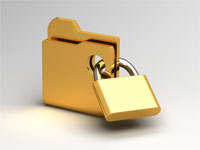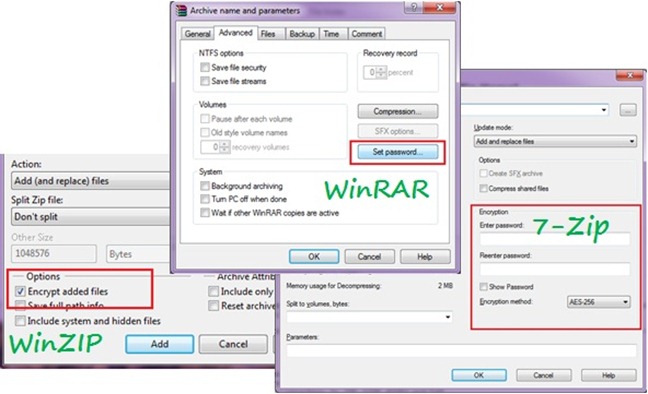

It is crucial to encrypt or password protect folders and files on your computer or on flash drives. For example, when you service your computer, you want to be sure that some of the important documents are not compromised in any way. In case you lose your notebook, tablet, USB drive, or external hard disk you want to be sure that important data is always safe. The cost of sensitive information therein can outweigh the cost of the equipment. Here is a quick way to protect the files and directories:
How to Easily Encrypt and Password Protect your Files and Folders
The easiest way to encrypt files and directories is using a compression software like WinZip, WinRAR or 7-Zip. This works universally on all versions and variants of Microsoft Windows.
Simply right-click the file or folder you wish to secure and choose add to archive option of your favorite compression software like WinZip, WinRar or 7-Zip. You can choose appropriate encryption options and enter a password when prompted.

Now whenever you access these folders or files, you need to enter the same password that you set while creating the archive. If you choose the Encrypt File Names option as well, you will be asked for password only while opening the archive. You wont be asked for password again and again for opening files or folders inside the archive. If you don’t choose the option, you are required to enter the password for opening every file in the archive. So I would recommend choosing the Encrypt File Names option.
Now that you have your secure archive file created, whenever you wish to secure any file, simply drag and drop the file or directory in the archive and it will be added to archive after you provide the correct password.
You can safely carry these archive files in your mobile media like flash drives, portable hard disk drives, or notebooks without worrying about losing important information.
A Word of Caution Before You Encrypt or Password Protect Any Files and Folders
- There are hacking tools and software utilities that can break into protected files. So use high grade encryption like 256-bit encryption. This will make it nearly impossible for anyone to crack your password.
- If you forget the password all your file data might be lost. There is no way to recover this data unless you recall the password or somehow break into the file. So password protect only those files which are absolutely necessary or have a way to remember your passwords.
- Although your file or folder is password protected it still can be deleted. Always backup all your files, even those protected by passwords.
It is always better to be safe than sorry. So, keeping these words of caution in mind, go ahead and password protect your important data.